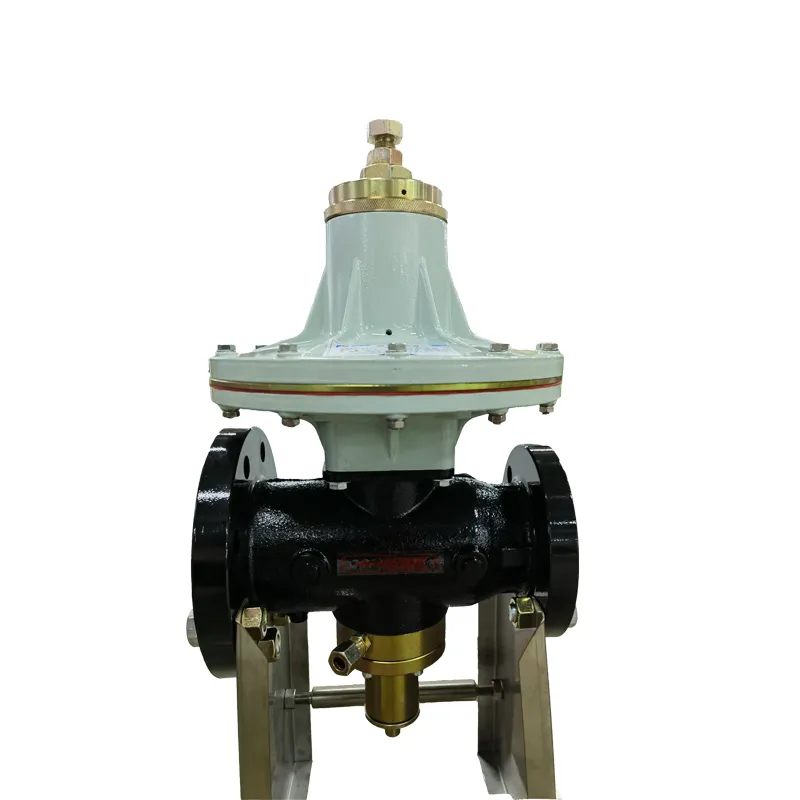
Dec . 26, 2024 01:42
Back to list
Gas Pressure Regulator Functionality and Applications in Industrial Systems
The Role of Gas Pressure Regulators in Modern Systems
In various industrial and residential applications, gas pressure regulators play a critical role in ensuring safe, efficient, and reliable operation. These devices are vital in managing the pressure of gases used for heating, cooking, and powering equipment. This article provides an overview of gas pressure regulators, their function, types, applications, and the importance of regular maintenance.
Overview and Function
A gas pressure regulator is a mechanical device designed to control the pressure of a gas within a system. The primary function of a regulator is to reduce the inlet pressure of the gas to a predetermined lower level, which remains constant regardless of fluctuations in the upstream pressure or variations in the demand downstream. This is particularly important since many gas appliances, such as heaters and cookers, require a specific pressure to operate safely and efficiently.
Pressure regulators work based on the principle of balancing forces. They typically consist of a diaphragm that responds to changes in pressure. When the pressure of the gas exceeds the set point, the diaphragm moves and activates a valve that reduces the flow of gas, thereby lowering the pressure. Conversely, if the pressure drops too low, the valve opens to allow more gas to flow in, ensuring a consistent pressure level.
Types of Gas Pressure Regulators
There are several types of gas pressure regulators, each suited to specific applications and environments. The most common types include
1. Single-Stage Regulators These are designed to reduce pressure in one step. They are suitable for applications where the inlet pressure does not vary significantly. Single-stage regulators are often found in residential applications, such as gas grills and home heating systems.
2. Two-Stage Regulators These regulators reduce pressure in two steps, providing more stable output pressure even when the inlet pressure fluctuates. They are commonly used in industrial settings, where varying pressures and higher flow rates are present.
3. Adjustable Regulators These allow users to set the desired outlet pressure according to their specifications. This flexibility makes them ideal for applications where precise pressure control is crucial, such as in laboratories or manufacturing processes.
منظم ضغط الغاز

4. Relief Regulators These devices incorporate a pressure relief feature to prevent overpressure conditions. They are essential in systems where excess pressure can lead to dangerous situations, such as gas pipelines or storage tanks.
Applications
Gas pressure regulators are widely used across numerous industries. In the residential sector, they are crucial for appliances that utilize natural gas or propane, such as water heaters, stoves, and furnaces. Their role in controlling pressure ensures these appliances operate safely and efficiently, helping to prevent accidents and reduce energy consumption.
In industrial applications, gas pressure regulators are used in processes such as welding, chemical manufacturing, and food processing. Maintaining the correct pressure is essential in these environments, as it directly affects product quality and operational safety.
Moreover, gas pressure regulators are also utilized in research laboratories where precise pressure control is necessary to conduct experiments. Their reliability in maintaining consistent pressure levels is vital for achieving accurate results.
Importance of Maintenance
Regular maintenance of gas pressure regulators is essential to ensure their optimal performance. Over time, components can wear out, affecting the regulator's ability to maintain the desired pressure. Routine inspections can help identify potential issues before they escalate, ensuring safety and avoiding costly downtime.
Maintenance tasks may include checking for leaks, testing the pressure settings, and ensuring all components are clean and functioning properly. Additionally, regulations or manufacturer recommendations should be adhered to, which may include periodic replacements of certain parts to prevent failure.
Conclusion
Gas pressure regulators are indispensable components in both residential and industrial systems, playing a vital role in safety and efficiency. Understanding their function, types, and applications can help users select the right regulator for their needs. Furthermore, prioritizing regular maintenance ensures these devices operate reliably, preventing potential hazards and ensuring optimal performance. As technology advances, the design and functionality of gas pressure regulators will continue to evolve, further enhancing their role in modern applications.
Next:
Latest news
-
Safety Valve Spring-Loaded Design Overpressure ProtectionNewsJul.25,2025
-
Precision Voltage Regulator AC5 Accuracy Grade PerformanceNewsJul.25,2025
-
Natural Gas Pressure Regulating Skid Industrial Pipeline ApplicationsNewsJul.25,2025
-
Natural Gas Filter Stainless Steel Mesh Element DesignNewsJul.25,2025
-
Gas Pressure Regulator Valve Direct-Acting Spring-Loaded DesignNewsJul.25,2025
-
Decompression Equipment Multi-Stage Heat Exchange System DesignNewsJul.25,2025

